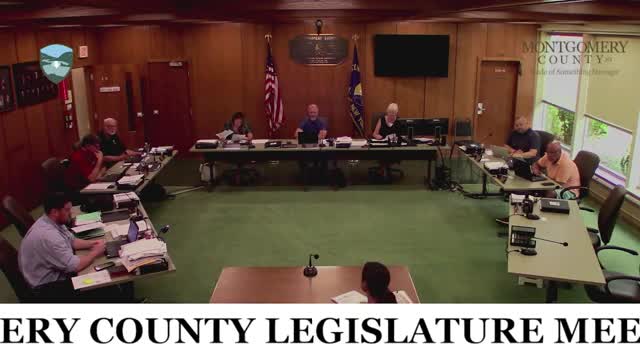Counties brace for new lead inspection mandate amid controversy
July 26, 2024 | Montgomery, New York

This article was created by AI summarizing key points discussed. AI makes mistakes, so for full details and context, please refer to the video of the full meeting. Please report any errors so we can fix them. Report an error »

In a recent government meeting, officials discussed significant changes to public health regulations that will impact three counties in New York, including the establishment of new public health program coordinators. The meeting highlighted the allocation of a $16,000 federal stipend aimed at enhancing mental health education programs, a move that underscores the ongoing commitment to public health initiatives.
However, the primary focus of the meeting was the introduction of a new public health law, identified as Law 1377, which mandates partial service counties to engage in environmental health services. This legislation requires counties to oversee a lead rental registry, compelling landlords of dual-occupancy dwellings to register their properties and undergo inspections every three years. The law has sparked controversy, particularly among officials from the affected counties, who argue that they lack the resources and infrastructure to comply effectively.
Legislator Majewski expressed frustration over the law, stating that despite efforts to advocate against it, the counties are now obligated to implement the new regulations. The law aims to address rising lead levels in vulnerable populations, particularly in municipalities with older housing stock, such as Amsterdam and Fort Plain, which have seen an increase in lead exposure among pregnant women and children.
The meeting also touched on the necessity of hiring code enforcement officers to manage the new program, with discussions about potential shared services between municipalities. However, the logistics of such arrangements remain complex, as they would require cooperation between different city administrations.
As the counties prepare to navigate these new requirements, officials emphasized the importance of public health and the need for adequate funding and staffing to ensure compliance. The state has allocated over $500,000 annually to each of the affected counties to support these initiatives, but concerns remain about the long-term sustainability and effectiveness of the program in addressing lead exposure and protecting community health.
However, the primary focus of the meeting was the introduction of a new public health law, identified as Law 1377, which mandates partial service counties to engage in environmental health services. This legislation requires counties to oversee a lead rental registry, compelling landlords of dual-occupancy dwellings to register their properties and undergo inspections every three years. The law has sparked controversy, particularly among officials from the affected counties, who argue that they lack the resources and infrastructure to comply effectively.
Legislator Majewski expressed frustration over the law, stating that despite efforts to advocate against it, the counties are now obligated to implement the new regulations. The law aims to address rising lead levels in vulnerable populations, particularly in municipalities with older housing stock, such as Amsterdam and Fort Plain, which have seen an increase in lead exposure among pregnant women and children.
The meeting also touched on the necessity of hiring code enforcement officers to manage the new program, with discussions about potential shared services between municipalities. However, the logistics of such arrangements remain complex, as they would require cooperation between different city administrations.
As the counties prepare to navigate these new requirements, officials emphasized the importance of public health and the need for adequate funding and staffing to ensure compliance. The state has allocated over $500,000 annually to each of the affected counties to support these initiatives, but concerns remain about the long-term sustainability and effectiveness of the program in addressing lead exposure and protecting community health.
View full meeting
This article is based on a recent meeting—watch the full video and explore the complete transcript for deeper insights into the discussion.
View full meeting
